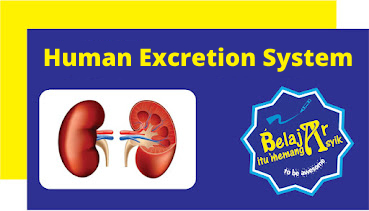In this article, we will discuss the Human Excretion System and the Amazing Things Inside It.
Then the human waste regulation system is divided into four categories:
- Excretion system: the system for getting rid of waste that the body no longer needs. This includes getting rid of urine through the kidneys, getting rid of sweat through the skin, getting rid of carbon dioxide through the lungs, and getting rid of toxins through the kidneys.
- Secretion system: the system for getting rid of useful substances. This includes things like saliva to help chew food, stomach acid to kill germs, oils to moisturize the skin, tears to keep the eyes healthy, and enzymes and hormones in the body.
- Defecation system: the system for getting rid of waste through the anus, in the form of feces and other waste.
- Elimination system: the system for getting rid of excess substances in the body such as food dyes, cosmetics, oils, and so on.
1. Kidney
The kidneys are the excretion system that is responsible for getting rid of urine out of the body. Urine is made up of water and dissolved substances such as metabolic waste (like urea), dissolved salts, and organic matter.
So the fluid and material that make up urine come from the blood or interstitial fluid. Composition of urine changes throughout the reabsorption process as important molecules for the body. Like glucose, are reabsorbed back into the body through carrier molecules.
The remaining fluid contains high levels of urea and various excess or potentially toxic compounds that will be eliminated from the body.
Kidneys are located on the right and left sides of the lower back bones. These organs, located in the back, are about the size of an adult’s hand and are shaped like a kidney bean. The blood filtering unit in the kidney is called a nephron.
Then Nephrons consist of several parts that interact and work together to filter waste from the blood. And excess substances to produce the final product called urine. Each person has around one million nephrons in each kidney.
The production of urine in the nephron happens in three steps:
- FILTRATION: filtering of the blood, filtering out the waste and the needed substances. This process results in primary urine.
- REABSORPTION: Reabsorption of the needed substances from the primary urine to produce secondary urine
- AUGMENTATION: Adding back of the waste substances. This process produces the final urine.
The Parts Of The Nephron
1. Glomerulus
A capillary blood vessel that is rolled up into a ball to make it easier for waste to be absorbed from the blood into the kidney.
2. Bowman’s Capsule
Ball-shaped structure that absorbs the filtered substances from the glomerulus and then sends the filtered results to the nephron tubules.
The substances filtered (FILTRATION) by the glomerulus consist of waste such as urea as well as substances still needed by the body such as glucose, amino acids, and so on. The result of FILTRATION is called primary urine.
3. Proximal Convoluted Tubule
In this channel, reabsorption (REABSORPTION) of substances still needed by the body such as salt, glucose, and amino acids occurs.
4. Loop of Henle
A U-shaped channel that is intended so that the urine from the proximal convoluted tubule flows to the distal convoluted tubule and does not return again. Reabsorption (REABSORPTION) of water occurs in the loop of Henle. The result of REABSORPTION is called secondary urine.
5. Distal Convoluted Tubule
This section, the re-addition (AUGMENTATION) of waste substances that will be eliminated because of their excessive amount in the body occurs. The result of AUGMENTATION is the actual urine.
6. Collecting Tubule
The part that connects the distal tubules of several nephrons into one, and then the collected urine will be sent through the renal pelvis to the next urine elimination place.
2. Lungs
Second The Human Excretion System is lungs. The lungs play a role as an excretory organ in eliminating waste products resulting from aerobic respiration.
In humans, respiration is the process of producing energy from food (glucose) and oxygen (O2). This process produces by-products such as carbon dioxide (CO2) and water vapor (H2O). Both of these substances are excreted through the lungs.
3. Skin
On the skin, the substance released is dry sweat (sweat gland) in The Human Excretion System. The substance comes from the sweat glands located in the dermis layer of the skin. It also serves to cool the body when the air is hot. This sweat also contains salt and specific pheromones in each person.
So the sweat glands on the skin are divided into two, namely the eccrine and apocrine glands. Then, The eccrine gland releases salt, acid, urea, and ammonia, which are waste products from nitrogen metabolism in the body. Meanwhile, the apocrine gland releases sweat that contains protein fats.
4. The Liver
The liver has various functions, one of which is as a neutralizer of poisons and foreign substances that enter the body.
These foreign compounds and poisons will then be processed so that they are no longer harmful and are excreted through the kidneys in the form of urine and also through the anus as part of feces.
The liver plays a role in breaking down damaged red blood cells. These red blood cells will be broken down into globin, iron, and heme. Globin and iron will be used to make new red blood cells, while heme will be converted into bile pigments called bilirubin and biliverdin.
These bile pigments are then transported to the digestive tract to help with various digestive functions and also to color feces.
The liver also plays a role in converting ammonia (a harmful substance produced by metabolism) into urea, which is then excreted through the kidneys in the form of urine. Thanks for read the article about The Human Excretion System and the Amazing Things Inside It.
